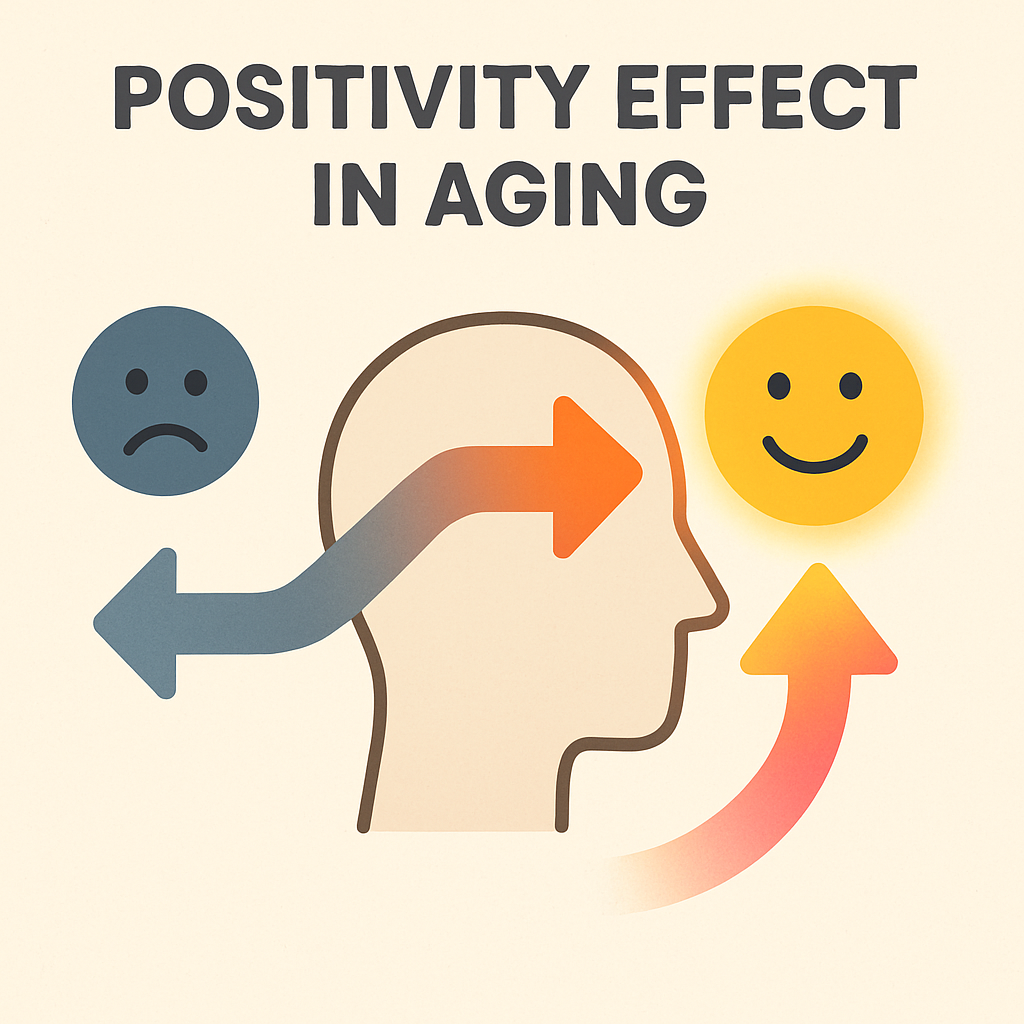
ChatGPT:
Aging and Motivated Cognition: The Positivity Effect in Attention and Memory
Introduction
Laura Carstensen’s 2005 article in Trends in Cognitive Sciences explores how aging shapes motivation and cognition, with a focus on the positivity effect—the tendency of older adults to selectively attend to and remember positive over negative information. This effect is framed within socioemotional selectivity theory (SST), which argues that shrinking time horizons in later life lead to shifts in motivational priorities, especially toward emotional regulation and well-being.
Shifting Motivational Priorities
- Younger adults often prioritize knowledge acquisition, exploration, and future planning, consistent with a broad time horizon.
- Older adults, by contrast, perceive time as more limited and prioritize emotionally meaningful experiences, placing greater emphasis on regulating feelings and maintaining positivity.
This motivational shift is central to understanding how cognition is influenced by aging.
The Positivity Effect in Attention
- Eye-tracking studies show that older adults spend more time gazing at happy faces and less time on negative expressions such as anger or sadness.
- This is not because negative information is incomprehensible but because attention is strategically directed toward information that sustains positive mood.
The Positivity Effect in Memory
- Memory experiments demonstrate that older adults recall positive images and words more readily than negative ones.
- In contrast, younger adults often show a negativity bias, remembering negative information better because it is adaptive for learning and survival.
- The positivity effect in memory suggests an age-related reversal of priorities, with emotional goals shaping recall patterns.
Cognitive Control and Effort
- Importantly, the positivity effect requires cognitive resources.
- When older adults are placed under divided attention tasks, the effect weakens, indicating that selective focus on positivity is an effortful, controlled process rather than automatic.
Neurocognitive Evidence
- Brain imaging studies reveal that older adults recruit prefrontal control regions when regulating emotional processing.
- This suggests they actively suppress or downregulate negative responses while enhancing positive ones.
- Emotional regulation thus involves top-down cognitive control, supporting SST’s claim that motivation drives cognitive selectivity.
Emotional Well-Being in Later Life
- The positivity effect contributes to emotional stability and resilience in older adulthood.
- Despite physical decline or social loss, older adults often report greater emotional well-being than younger counterparts.
- Selective attention and memory for positive information help buffer against stress and maintain life satisfaction.
Boundary Conditions
- The positivity effect is less pronounced in situations demanding rapid response or under conditions of cognitive strain.
- This shows it is not universal but context-dependent, functioning when cognitive control can be engaged.
Implications
- Carstensen’s findings reframe aging as adaptive rather than purely deteriorative.
- Cognitive changes reflect not just losses in speed or memory capacity but also gains in motivational focus and emotional regulation.
- This perspective highlights psychological strengths of aging, challenging stereotypes of inevitable decline.
Conclusion
Carstensen’s article provides a compelling framework for understanding how motivation, cognition, and aging interact. The positivity effect illustrates how older adults strategically use attention and memory to enhance emotional well-being. Far from reflecting deficits, these changes underscore the adaptive, goal-directed nature of cognitive aging, where emotional satisfaction becomes the central organizing force of mental life.
FAQs on
Aging and Motivated Cognition: The Positivity Effect in Attention and Memory
(Carstensen, 2005)
What is the main idea of the article?
The article argues that aging is not just cognitive decline but also involves motivational changes. Older adults prioritize emotionally meaningful goals, leading to a positivity effect in attention and memory, where they focus more on positive than negative information.
What is the “positivity effect”?
The positivity effect is a cognitive pattern in which older adults preferentially attend to and remember positive stimuli, while younger adults often show a negativity bias. It reflects motivated cognition rather than impaired processing of negative information.
How is the positivity effect explained by socioemotional selectivity theory (SST)?
SST proposes that people’s goals change as they age due to shrinking time horizons. Younger people pursue knowledge and exploration, while older people prioritize emotional satisfaction and regulation, which drives the positivity effect.
What experimental evidence supports the positivity effect?
- Eye-tracking studies: Older adults gaze longer at happy faces and avoid negative expressions.
- Memory studies: Older adults recall more positive than negative words and images.
- Attention tasks: When given choices, older adults favor positive over negative information.
Is the positivity effect automatic or effortful?
It is largely effortful. Under divided attention or high cognitive load, the positivity effect weakens, showing that it depends on cognitive control resources.
How do younger and older adults differ in emotional memory?
- Younger adults show a negativity bias, remembering negative events more vividly, which may help with learning and survival.
- Older adults show a positivity bias, remembering positive experiences more, which helps maintain well-being.
What brain mechanisms are involved in the positivity effect?
Neuroimaging studies suggest older adults recruit prefrontal regions to regulate emotional processing, downregulating negative affect and enhancing positive focus.
What are the boundary conditions of the positivity effect?
The effect is reduced when:
- Cognitive resources are limited (e.g., divided attention tasks).
- Situations demand rapid responses without time for regulation.
This shows the effect requires active regulation.
How does the positivity effect contribute to emotional well-being in older adults?
By selectively attending to and remembering positive information, older adults maintain emotional stability and resilience despite challenges like physical decline, social losses, or health problems.
What is the broader significance of this research?
Carstensen reframes aging as involving motivational gains in emotional regulation, not just decline. The positivity effect highlights how aging minds adaptively reorganize attention and memory to prioritize emotional well-being.
